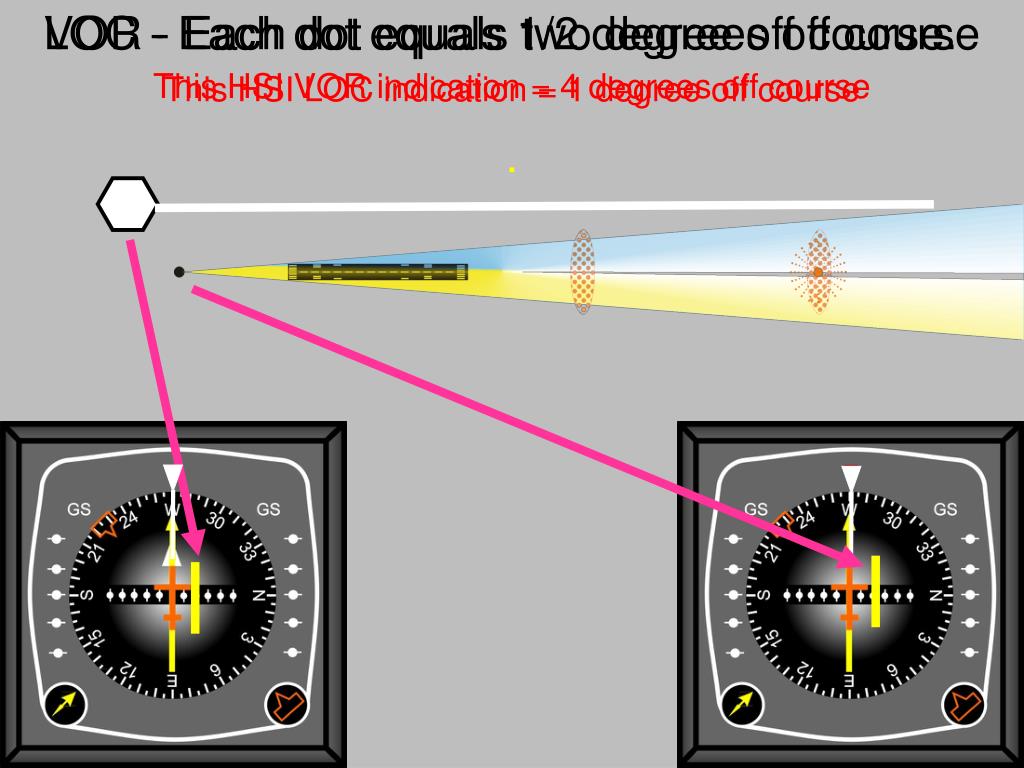

We are actively working to correct these imperfections Modern multiband cellular antennas advertise (for the sake of simplicity) as operating 700 to 2700 MHz when in actual fact the datasheet will show two or three frequency ranges: 698 to 960 MHz, 1710 to 2170 MHz, and 2300 to 2700 MHz. At this point you are cleared to descend to the next segment altitude of the instrument approach procedure. Publicly means that everything is not perfect and that we are still actively working. An antenna may have multiple ranges, particularly in the case of cellular antennas and combination designs. You arent established on the localizer until your CDI needle, when tuned to the localizer frequency and dialed into the proper course moves to within on dot width of center. Because there are still months of work to do, mainly on the design. Nevertheless, we have decided to do this work publicly so that this migration does not disturb your trainings or exams. The design of absolutely all the articles must be redone. Not all articles are present and every week some articles will be added. If there is a leftward deviation from the desired course, there will be a predominant 90 Hz amplitude, and if there is a rightward deviation there will be a predominant 150 Hz amplitude.Important Notice: The work on documentation is still in progress. When the aircraft is approaching the runway on the desired course, the air−borne receiver receives the two modulation signals with equal amplitudes. The Course information consists of 90 and 150 Hz amplitude−modulated signals. In the LLZ−1F, this sector is covered by a specifically formed antenna pattern, and, in the LLZ−2F system, it is covered by an additional Clearance signal. distance from the location of the localizer and the navigation deviation dependent on the elongated. the correct frequency when the localiser frequency is selected on the. ICAO Annex10 (4th Ed., April 85, section 3.1.3.7.3).ĭDM greater than or equal to18 % shows a sector of ☑0°and DDM greater than or equal to15.5 % characterizes a sector of ☑0° to ☓5° where correct LLZ information is still obtained. frequencies, but occupy a wider frequency spectrum. approach end, at a distance which ensures that it lies below the runway take-off. 105 m for the half sector calculated for DDM=15.5 %. The carrier is amplitude modulated at 90 and 150 Hz to. The DDM has a linear characteristic within these points and an elevation of 0.00145 DDM per meter. The localizer consists of a transmitter with carrier frequency in the range 108 fc 112 mHz. The LOC signal is in the 110 MHz range while the G/S signal is in the 330 MHz range. DDM 15.5 % occurs at the course sector selected such that the boundary at the level of the runway threshold is about 105 m to the left and right of the runway with respect to the centre line, which points are known as WIDTH points. Localizer (LOC) and glide slope (G/S) carrier frequencies are paired so that the navigation radio automatically tunes the G/S frequency which corresponds to the selected LOC frequency. DDM greater than or equal to 18 % (0.18)ĭDM 0 occurs when the approach direction corresponds exactly to the runway centre line.Difference in Depth of Modulation (DDM) = 0 Aviation Radio Frequency Bands 2100 - 28,000 kHz, HF Radio Communications 75 MHz, NAV-AID (Marker Beacons) 108 - 112 MHz, VOR and ILS Localizer 112 - 118.

The characteristic values for LLZ within certain sectors, and in relation to the runway centre line, are as follows: 31 km) for a sector of ☓5° relative to the course line and the Localizer−antenna. 46 km) for a sector of ☑0°, and it is obtainable up to a distance greater than or equal to 17 nautical miles (approx. Les fréquences glide path et DME lorsquelles existent sont dans des gammes de fréquences différentes (UHF) mais appariées à celle du localizer, ce qui reste transparent pour lutilisateur. Two signals are transmitted on one of 40 ILS channels between the carrier frequency range 108.10 MHz and 111.95 MHz (with the 100 kHz digit always odd). The localizer signal is obtainable up to a distance of up to 25 nautical miles (approx. Dun point de vue pratique, lutilisateur affiche une seule fréquence, celle du localizer, comprise dans la gamme VHF 108,0 - 111,975 MHz. This signal identifies the "course plane" and is produced by a transmitter and antenna system, which can be a 2F system with 25 W transmitter power or a 1F system with 30 W transmitter power. The Localizer generates an RF−signal in the frequency range of 108 to 112 MHz, which is modulated in amplitude with 90 and 150 Hz.


 0 kommentar(er)
0 kommentar(er)
